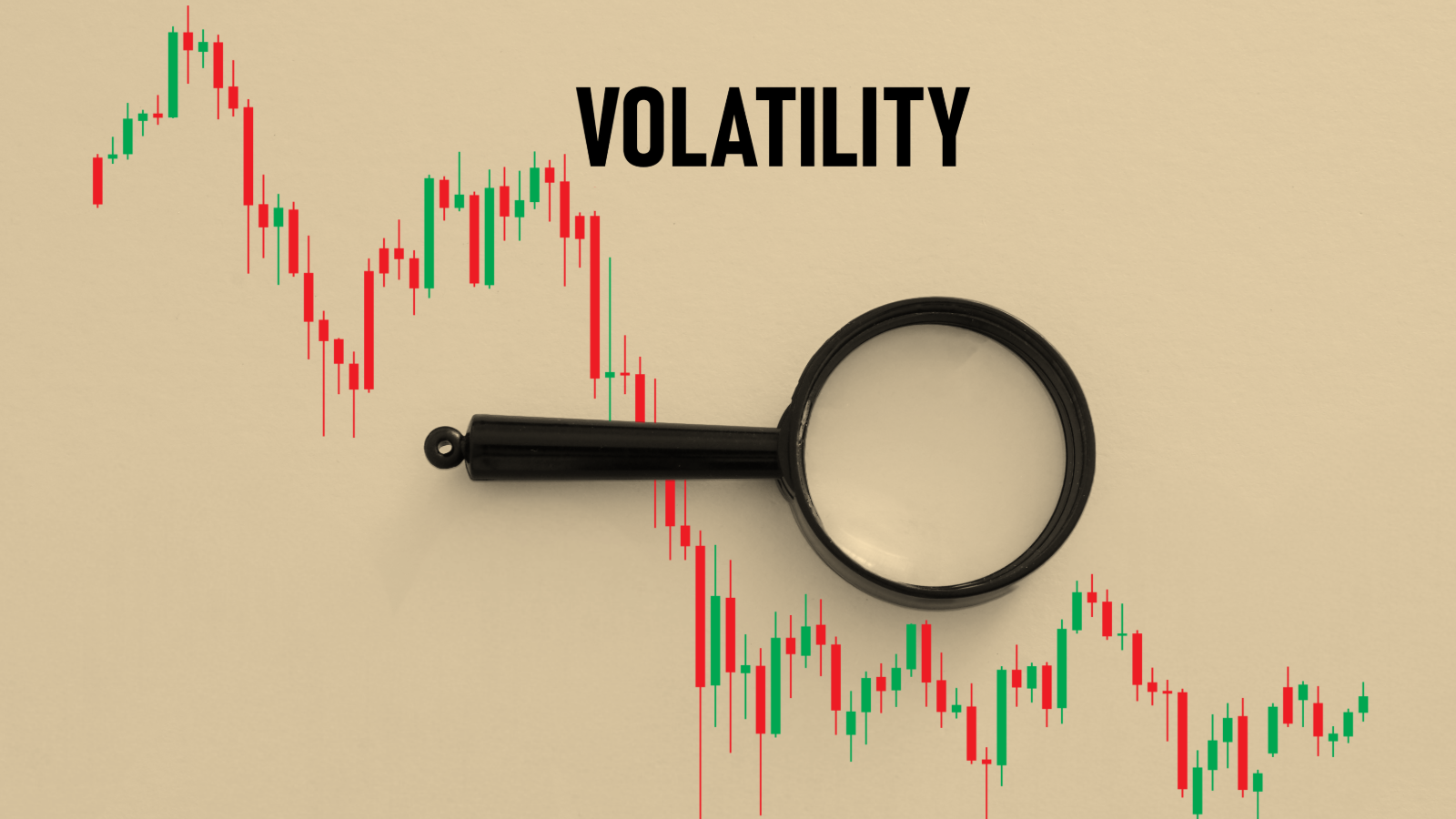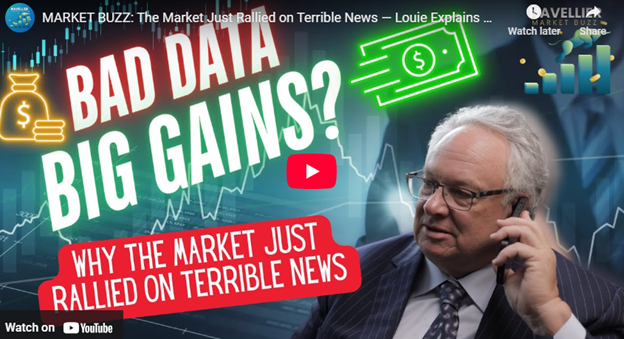Good News and the Market…Yawns

May CPI comes in below expectations… a U.S./China trade framework means we have rare earth elements again… why Jeff Clark expects more volatility… the potential tailwind from pro money managers
Two good pieces of news hit the headlines this morning.
First, the Consumer Price Index (CPI) in May rose just 0.1% month-to-month, lower than the forecast of 0.2%. On the year, it climbed 2.4% matching expectations.
Core CPI, which strips out volatile food and energy prices, rose 0.1% monthly and 2.8% yearly. Those figures compared with forecasts of 0.3% and 2.9%, respectively.
For more details, let’s go to legendary investor Louis Navellier and this morning’s Flash Alert in Growth Investor:
Prices of vehicles fell – both new and used. Apparel fell. Food costs were up 0.3% but energy costs declined 1%, led by a 2.6% decline in gasoline prices.
So, the only inflation we can see is service costs, up 0.2% and, again, shelter costs – owner’s equivalent rent – they were up 0.3%, and they have yet to decline. They are about 90% of the CPI inflation.
So, this is good news.
To Louis’ point, investors who have been concerned about the risk of tariffs reigniting inflation should feel encouraged.
Yes, price increases are still a risk, and changes in tariff policy could heat up prices later this summer, but for the moment, this is reassuring.
But why haven’t we seen any material price increases caused by higher tariff rates?
Goldman Sachs points toward two reasons: 1) companies are still using the inventory buildup that preceded the Liberation Day tariffs, and 2) companies have only slowly adjusted their prices, hoping to avoid sticker shock.
Looking forward, though Goldman believes we could see some higher prices, it isn’t expecting prolonged high inflation. While this is good news at face value, the reason is because Goldman predicts a tighter jobs market and cash-strapped consumers.
Even with this cool inflation print, it’s unlikely the Federal Reserve will be cutting rates next Wednesday
Next week brings the June FOMC meeting, and expectations are for the Fed to hold rates at current levels.
We see this in the CME Group’s FedWatch Tool, which shows us the probabilities that traders are assigning various fed funds target rates at different dates in the future.
Despite this morning’s cool inflation print, traders put 99.8% odds on the Fed sitting on their hands next week. In fact, the most noticeable shift we’ve seen in expectations is for a price hike, not cut. There’s now a 0.2% probability that the Fed will raise rates a quarter-point next week.
However, traders still believe we’re on pace for the first rate cut to arrive in September. Traders put 67.3% odds on at least one quarter-point cut.
Looking ahead to the end of the year, traders still place the heaviest odds on two quarter-point cuts (40.7%), though the probability of three or four quarter-point cuts stands at 25.7%.
We’ll report back as these numbers shift.
The second piece of good news comes on the trade front with China
The U.S. and China have revived their trade-war truce, subject to final approval from President Trump and President Xi Jinping. Trump has since described the deal as “done.”
The primary issue for the U.S. has been the restoration of imports of critical rare earth elements from China. And that’s allegedly what we achieved.
This is big because rare earth elements are critical to all things “tech.”
However, this is only temporary. Here’s The Wall Street Journal:
China is putting a six-month limit on rare-earth export licenses for U.S. automakers and manufacturers, according to people familiar with the matter, giving Beijing leverage if trade tensions flare up again while adding to uncertainty for American industry…
Beijing wants to keep its chokehold on the supply of such critical commodities for future negotiations, according to people who consult with senior Chinese officials.
The Chinese win is that the U.S. will allow Chinese students back into U.S. colleges. This had become a sticking point following May’s trade framework set in Geneva.
They’ll also get some loosening of export controls.
Back to the WSJ:
U.S. negotiators agreed to relax some recent restrictions on the sale to China of products such as jet engines and related parts, as well as ethane, a component of natural gas important in manufacturing plastics.
Details of the framework are still being worked out, the people said.
As to tariff rates, here’s President Trump from this morning on Truth Social:
WE ARE GETTING A TOTAL OF 55% TARIFFS, CHINA IS GETTING 10%. RELATIONSHIP IS EXCELLENT!
This “55%” tariff comes from a 10% baseline “reciprocal” tariff, a 20% tariff for fentanyl, and a 25% tariff reflecting pre-existing tariffs.
Commerce Secretary Howard Lutnick said this 55% rate will not change, even though we don’t have a finalized trade deal.
Despite the overall good news, the market is only mildly higher as I write. This likely reflects the reality that this morning’s news – while certainly not negative – basically kicked the can down the road.
Negotiators mostly agreed to a “framework” rather than buttoned-up deal points. And a meeting that ends with an agreement to have more meetings really doesn’t have much to show for itself.
That said, at a minimum, the news wasn’t bad – and that’s a win.
“Complacent investors are about to get smoked”
That’s the warning from market veteran and master trader, Jeff Clark.
For newer Digest readers, Jeff is a technical trading expert. He uses a suite of indicators and charting techniques to profitably trade the markets regardless of direction – up, down, or sideways.
This morning, he went live, detailing why he believes the market is in for massive volatility over the next few months… how to profitably trade it… and the “generational buying opportunity” he sees arriving on the other side of that volatility.
If the idea of market upheaval sounds unlikely, Jeff offers an explanation:
That’s what happens following a bear market rally.
Investors let down their guards. They get comfortable with the stock market moving higher.
They don’t worry about valuations, earnings, or the potential for negative headlines. They figure everything is going to be just fine.
Then they get smoked as the bear takes another swipe.
To make the case for volatility, Jeff points to the stock market’s “fear gauge,” the VIX Volatility Index, along with its Bollinger Band readings.
If you’re less familiar with these terms, the VIX is a measure of market expectations about the S&P’s volatility over the next 30 days. The higher the reading, the more anxiety about upcoming market conditions.
Bollinger Bands are a technical trading tool that help investors visualize an asset’s volatility as they look for entry and exit points.
Here’s Jeff:
Take a look at this chart of the Volatility Index (VIX) along with its Bollinger Bands…

Source: StockCharts.com
Whenever the VIX gets near its lower Bollinger Band, it’s a sign of investor complacency. The red arrows on the chart point to the last few times the VIX was in this condition.
Each time, volatility spiked shortly afterwards. And, of course, that coincided with a broad stock market decline.
On Monday, the VIX closed just above its lower Bollinger Band, and Jeff says this suggests two implications for investors:
Be cautious on the stock market for the next several weeks.
It’s also a reason to bet on a spike higher in volatility.
The nuts and bolts of trading volatility
One of Jeff’s preferred methods for trading broad market volatility is to go long the ProShares Ultra VIX Short-term Futures ETF (UVXY).
UVXY is an exchange-traded fund that uses futures contracts to track volatility. Jeff notes that it’s not an exact match to the Volatility Index. But it’s close enough – if the VIX spikes, so too will UVXY.
In recent Digests, we’ve profiled how trading can put double-, sometimes triple-digit gains in your pocket in just weeks, sometimes days. Jeff believes UVXY offers that potential today based on its recent performance:
UVXY gained 50% in just a few days back in December. It popped 60% higher in two weeks in February.
And as the stock market melted down in early April, UVXY gained more than 100% in just one week.
A similar move this time around could have UVXY trading above $40 by the end of the month.
To be clear: We are NOT recommending you place this trade on your own. We provide it as an example of going long volatility.
And in today’s increasingly optimistic market environment, we share this trade as a reflection of Jeff’s cautious outlook.
While sentiment may be turning bullish, this trade highlights his conviction that risks remain – and if the market does pull back meaningfully in the coming weeks, it will underscore the value of Jeff’s experience and discipline in staying grounded when the crowd grows exuberant.
We’ll track the trade and will report back.
And to catch a free replay of this morning’s presentation, just click here.
The case for the good “up” kind of volatility after a drawdown
If Jeff is right and we’re on the edge of a significant market drawdown, keep your eyes peeled for the pendulum to swing too far in the “oversold” direction.
If that happens, it might be setting up a “must buy” moment for fund managers who completely missed out on the US/China truce rally last month – and that could result in an outsized rebound.
To make sure we’re all on the same page, hedge fund managers are judged by how well they perform relative to their benchmarks. So, falling behind a rising index can have serious career and compensation consequences.
As to that “falling behind,” here’s Bloomberg:
A survey [Bank of America] conducted before the [U.S./China] trade talks in Geneva showed fund managers were a net 38% underweight on US stocks, the most in two years.
Exposure to the dollar was the lowest since 2006, with about 40% of respondents looking to increase hedges against declines in the US currency…
But with investor exposure to stocks so low, market participants have warned a sustained equity rally would leave bearish positions sitting on steep losses…
Investors are likely to be forced to chase the stock rally sparked by the US-China trade truce after mostly missing out on last month’s rebound.
With the S&P now regaining traction and year-to-date numbers turning positive (mostly thanks to retail, not pro investors), money managers will feel increasing pressure to buy back in – not out of conviction, but out of necessity.
Back to Bloomberg:
Institutional and hedge fund investors remain widely underexposed to equities.
Hedge funds’ net leverage is near five-year lows and mostly short US stocks, while systematic strategies remain under-positioned, strategist Michalis Onisiforou [at BBVA] wrote in a note to clients.
Just a reminder that professional buying pressure can become its own tailwind. And from the looks of it, that wind will pick up in intensity if we see a selloff.
We’ll keep you updated on all these stories here in the Digest.
Have a good evening,
Jeff Remsburg





















